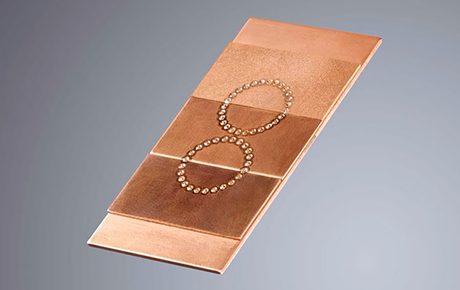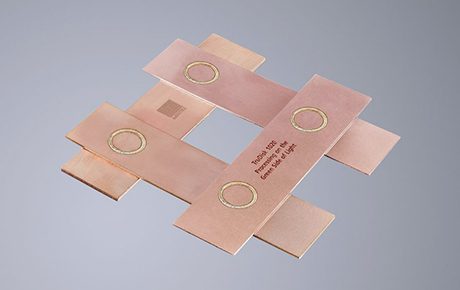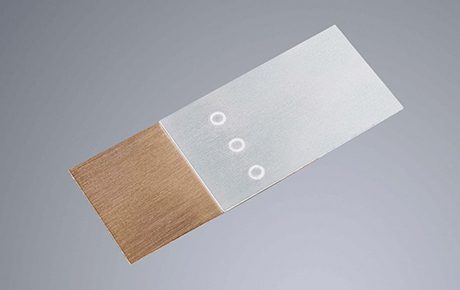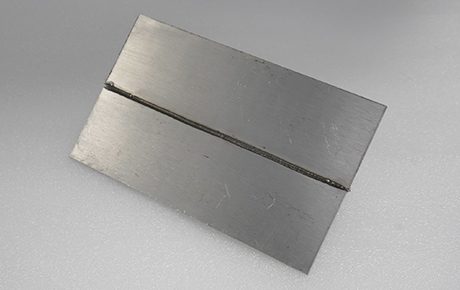FW-PA Laser Welding Machine
The FW-PA laser welding machine features a platform design, automatic welding head, fiber laser, and inspection camera for precise, high-speed, and fully automated metal welding.
Produces clean, narrow weld seams with minimal distortion, ideal for tight-tolerance applications in many industries.
Achieves strong welds even on thick materials while minimizing heat-affected zones and reducing the risk of warping or cracking.
Operates at high speeds with consistent quality, significantly boosting production efficiency and reducing cycle times in manufacturing.
Generates smooth, clean welds with little to no spatter, reducing the need for grinding, polishing, or rework.
Capable of welding a wide range of metals, including stainless steel, aluminum, with strong joints and excellent structural integrity.
Easily integrates into automated lines, enabling seamless, high-precision welding in advanced manufacturing environments.






Laser welding does not always require filler material, but it depends on the type of joint, material thickness, and application requirements. Unlike traditional welding methods, laser welding can achieve high-strength, precise welds through autogenous (fusion) welding, where the base metals melt and fuse without additional material. However, in certain cases, filler material may be necessary.
Laser welding can be performed with or without filler material, depending on the joint design, material properties, and welding application. For tight-fit, precision welding, no filler is required, while gapped joints, dissimilar metals, or thick materials may benefit from filler material to enhance weld quality and strength.
Thermal deformation is a potential concern in laser welding, but it is significantly lower compared to traditional welding methods such as MIG, TIG, or arc welding. This is because laser welding has a highly focused heat input, leading to minimal thermal distortion. However, factors such as material type, heat buildup, welding speed, and joint design can still influence the level of deformation.
While laser welding significantly reduces thermal deformation compared to conventional welding, thin materials, excessive heat input, and poor fixturing can still cause some warping. By optimizing parameters, using proper clamping, pulsed welding, and cooling techniques, deformation can be minimized, ensuring high-quality, precise welds with minimal distortion.
Laser welding is highly versatile and can be used to create various joint types, depending on material thickness, application requirements, and weld strength needs. Below are the most common types of joints that can be welded using laser technology.
Laser welding supports butt, lap, T-joint, corner, edge, and flange joints, making it ideal for precision fabrication, structural applications, and high-strength welding. Choosing the right joint type depends on material thickness, strength requirements, and welding technique.
We offer a comprehensive warranty policy to ensure reliable performance and long-term support for our laser welding machines. Below is a detailed breakdown of our warranty coverage, including the warranty period, terms and conditions for different components, and how customers can apply for warranty service.
Our laser welding machine has a 3-year warranty on the entire machine, a 2-year warranty on the laser generator, and a 1-year warranty on core components. This structured warranty ensures that customers receive high-quality support and service. To maintain the performance of the machine and extend its life, we recommend regular maintenance and correct operation. If any problems arise, our technical support team can assist with troubleshooting and warranty claims.
Our laser welding machines meet international quality, safety, and regulatory standards, ensuring reliability, compliance, and customer confidence. Below is a detailed overview of the key certifications our machines hold and their significance.
Our laser welding machines are certified to meet international quality and safety standards, including ISO 9001, CE, and FDA certifications. These certifications ensure that our machines are manufactured with strict quality control, meet European safety regulations, and comply with U.S. laser safety requirements. Customers can be assured of high performance, reliability, and legal compliance when purchasing and operating our machines.
On-site technical support is available for laser welding machines, providing customers with hands-on assistance for installation, troubleshooting, training, and maintenance. However, this service comes at an additional cost. The standard service fee is US$200 per day, and customers are also responsible for covering the engineer’s round-trip airfare, board, lodging, and local transportation if required. This ensures that customers receive expert guidance directly at their facility to maximize machine performance and minimize downtime. The process for requesting on-site support involves contacting customer service, providing details of the issue, receiving a cost estimate, and scheduling an engineer visit. While on-site service is a valuable option, customers can also choose remote support, which includes troubleshooting via phone, email, or video calls, as well as access to online training materials and documentation at no additional cost. If in-person assistance is necessary, we are ready to arrange a visit to ensure the machine operates efficiently and reliably.
Our machines are built with robust components and high-precision engineering to ensure long-term durability and consistent welding performance in demanding environments.
We offer intelligent control systems, auto-focus laser heads, and real-time monitoring to deliver fast, accurate, and stable welding results.
Our machines support a wide range of welding methods and materials, from thin sheets to complex assemblies, across multiple industries.
We provide machine configurations tailored to your specific workflow, product design, and production volume for optimal performance and efficiency.
Faster Laser offers professional training, technical support, and fast-response service to ensure seamless operation and minimal downtime.
Our machines combine high-quality performance with competitive pricing, helping businesses maximize productivity while minimizing energy, labor, and material waste.
8 reviews for FW-PA Laser Welding Machine
Mabel –
As a rookie, I dreaded complicated parameter lists, yet the touchscreen’s bold icons highlight exactly what to change. Within three hours, I progressed from practice coupons to real aluminum drone frames. My mentor says he’s never witnessed such rapid skill acquisition, and I feel genuinely empowered operating this advanced tool.
Barrett –
Aluminum chassis welds once needed chemical stripping before anodizing. Laser seams emerge shiny and oxide-free, so solvent baths vanished, improving environmental metrics. Finance also notes quarterly reductions in hazardous-waste disposal fees. The cleaner workflow shortened lead times, enabling us to accept rush jobs that would previously have been impossible, profitably.
Jude –
Quiet operation finally allows simultaneous client design meetings in our showroom, something grinders and MIG spatter previously ruled out. Architects admire the glass-smooth seams, and marketing photos need zero retouching. Reduced cleanup freed two artisans for higher-margin custom work, so the machine paid for itself long before the first anniversary.
Heidi –
Offshore platforms severely restrict hot-work approvals. The welder’s cool surface temperature and spark-free arc sailed through safety briefings, letting bracket repairs complete before a gale closed the weather window. Compact size fits helicopter cargo nets easily, and rugged casters roll across grated decks without wobble, earning praise from veteran riggers.
Holden –
Thick staircase flanges previously demanded two stick passes and heavy grinding. Dual-pulse function now achieves full, clean penetration in a single sweep, halving labor hours and blades consumed. Crew morale improved because radiant heat and lingering fumes dropped sharply in cramped shafts, making summer refurb projects safer, faster, and cheaper.
Tate –
Tiny stainless steel brackets once needed fixturing tape to fight warping. Laser seams hold geometry unaided, freeing operators’ hands to stage the next lot while current pieces weld. Automatic log files attach batch IDs, giving quality engineers perfect traceability. Throughput jumped, and inspection rejected only three parts last month—an all-time low.
Reagan –
Portable unit allows on-roof welding of stainless steel ducts without hot-work fire watches typical for open-flame methods. Cool operation, scant fume, and near-silent fans satisfy tough city inspectors, letting our crew finish before lunch instead of returning after permits clear. Building owners praise the slim, easy-to-clean beads that never trap dust.
Daphne –
Eliminating heat distortion lets us tighten tolerance budgets on mating holes, so laser-cut components slip together first attempt without reaming. Assembly time fell, tooling wear decreased, and dimensional stack-ups virtually disappeared. Unexpectedly, upstream departments reported smoother kitting because parts now nest reliably in bins, streamlining the entire production value stream.